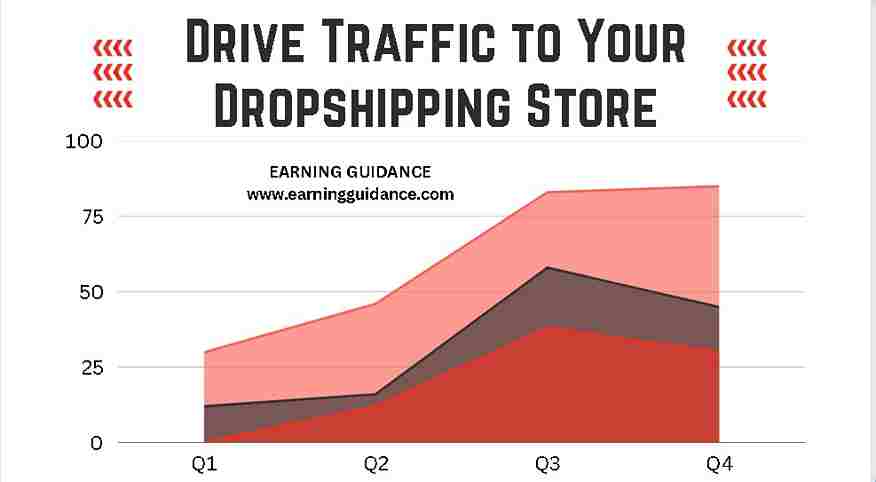Table Of Contents
- 1 10 Essential Dropshipping Tips for Beginners
- 1.1 Tip 1: Research Your Niche
- 1.2 Tip 2: Find Reliable Suppliers
- 1.3 Tip 3: Build a Professional Online Store
- 1.4 Tip 4: Optimize Product Listings
- 1.5 Tip 5: Set Competitive Prices
- 1.6 Tip 6: Implement Effective Marketing Strategies
- 1.7 Tip 7: Offer Excellent Customer Service
- 1.8 Tip 8: Monitor and Analyze Performance
- 1.9 Tip 9: Continuous Learning and Adaptation
- 1.10 Tip 10: Stay Committed and Persistent
- 1.11 FAQs
- 1.12 Conclusion
10 Essential Dropshipping Tips for Beginners
Note: The following article is a comprehensive guide for beginners looking to start their dropshipping business. It provides valuable tips and insights to help you succeed in this exciting venture.Introduction
Dropshipping is a business model that allows entrepreneurs to start an online store without stocking inventory. As a beginner, venturing into the world of dropshipping can be both thrilling and overwhelming. However, armed with the right knowledge and strategies, you can build a successful and profitable business. In this article, we will explore ten essential dropshipping tips for beginners, covering various aspects of the dropshipping journey, from niche selection to customer service. Let’s dive in!
The Ultimate Guide to Dropshipping: Everything You Need to Know
Tip 1: Research Your Niche
Researching your niche is a crucial step in setting the foundation for your dropshipping business. By understanding your target market and identifying profitable niches, you can position yourself for success. Here are some key steps to follow when researching your niche:
- Identify your interests and passions: Start by brainstorming the niches or industries that align with your interests and knowledge. Choosing a niche that you are passionate about will make the journey more enjoyable and fulfilling.
- Analyze market demand: Once you have a few niche ideas, assess their market demand. Use keyword research tools like Google Keyword Planner or SEMrush to identify the search volume and trends related to your niche. Look for niches with a healthy balance of demand and competition.
- Evaluate competition: Research the existing competitors in your chosen niches. Analyze their product offerings, pricing, marketing strategies, and customer reviews. This will help you understand the level of competition and identify ways to differentiate yourself.
- Identify target audience: Define your target audience within the chosen niche. Understand their demographics, preferences, pain points, and buying behavior. This information will help you tailor your products and marketing efforts to meet their needs effectively.
- Consider profitability: Assess the profitability of your chosen niche by evaluating factors such as product pricing, profit margins, and potential recurring purchases. Look for niches with products that have good profit potential while considering the costs associated with sourcing and marketing.
- Validate your niche: Validate your niche by conducting market research surveys or by reaching out to potential customers. Gather feedback and insights to ensure there is a genuine interest in your chosen niche.
- Stay updated: Keep yourself updated on industry trends, new product launches, and changing consumer preferences within your niche. Subscribe to relevant newsletters, follow industry influencers, and join online communities to stay informed.
By thoroughly researching your niche, you will gain valuable insights that will guide your product selection, marketing strategies, and overall business approach. Remember, choosing the right niche is the foundation for a successful dropshipping business.
Tip 2: Find Reliable Suppliers
Finding reliable suppliers is crucial for the success of your dropshipping business. Working with trustworthy suppliers ensures that your customers receive high-quality products and have a positive experience. Here are some essential steps to help you find reliable suppliers:
- Use reputable supplier directories: Utilize reputable supplier directories like SaleHoo, Oberlo, or Worldwide Brands. These directories provide a list of verified suppliers that have been vetted for reliability and quality.
- Attend trade shows and exhibitions: Attend industry-specific trade shows and exhibitions to connect directly with suppliers. These events allow you to establish personal relationships, evaluate product samples, and negotiate pricing and terms.
- Reach out to manufacturers and wholesalers: Research manufacturers and wholesalers in your niche and reach out to them directly. Inquire about their dropshipping programs and ask for references or customer testimonials to assess their reliability.
- Read online reviews and ratings: Search for reviews and ratings of potential suppliers on platforms like Trustpilot, Google, or industry-specific forums. Pay attention to feedback related to product quality, shipping times, and customer support.
- Request product samples: Before committing to a supplier, request product samples to evaluate the quality firsthand. This allows you to assess the product’s condition, packaging, and overall suitability for your target audience.
- Evaluate communication and responsiveness: Contact the supplier and assess their communication skills and responsiveness. Prompt and clear communication is essential for a smooth dropshipping partnership.
- Check their dropshipping policies: Review the supplier’s dropshipping policies and terms to ensure they align with your business requirements. Look for factors like order processing times, return policies, and minimum order quantities.
- Test their shipping methods and times: Place test orders to evaluate the shipping methods and delivery times offered by the supplier. Timely and reliable shipping is crucial for maintaining customer satisfaction.
- Consider multiple suppliers: To diversify your product offerings and mitigate risks, consider working with multiple suppliers. This allows you to compare prices, product availability, and shipping options.
- Seek recommendations from other dropshippers: Reach out to other dropshippers or join online communities to seek recommendations for reliable suppliers. Experienced dropshippers can provide valuable insights and suggestions based on their own experiences.
Remember, finding reliable suppliers is an ongoing process. Continuously evaluate and assess your suppliers’ performance to ensure they meet your business’s needs and provide consistent quality and service.
Tip 3: Build a Professional Online Store
Building a professional online store is essential for establishing credibility, attracting customers, and maximizing sales. Here are some key steps to create a professional and user-friendly dropshipping store:
- Choose a reliable e-commerce platform: Select an e-commerce platform that suits your needs and provides essential features for dropshipping. Popular platforms include Shopify, WooCommerce, and BigCommerce.
- Select an appealing theme: Choose a visually appealing and responsive theme that aligns with your brand and niche. Consider themes that offer customization options and showcase products effectively.
- Design a clean and intuitive layout: Create a clean and intuitive layout that makes it easy for visitors to navigate your store. Ensure that important elements like product categories, search bar, and shopping cart are easily accessible.
- Optimize loading speed: Optimize your website’s loading speed to provide a smooth browsing experience. Compress images, minimize JavaScript and CSS files, and use caching techniques to reduce load times.
- Highlight product benefits: Clearly showcase the benefits and unique selling points of your products. Use persuasive copywriting techniques to emphasize why customers should choose your products over others.
- Ensure mobile responsiveness: With the increasing use of mobile devices, it’s crucial to have a mobile-responsive store. Test your store’s responsiveness on different devices and screen sizes to provide a seamless experience for mobile users.
- Integrate secure payment options: Offer secure and trusted payment options to instill confidence in your customers. Integrate popular payment gateways such as PayPal, Stripe, or Apple Pay to facilitate smooth transactions.
- Optimize product pages: Optimize your product pages for conversions. Include high-quality product images from multiple angles, detailed descriptions, pricing information, and clear call-to-action buttons.
- Implement user reviews and ratings: Enable customer reviews and ratings on your product pages. Positive reviews build trust and credibility, encouraging other customers to make a purchase.
- Include contact information and customer support: Display your contact information prominently, including email, phone number, and social media handles. Offer customer support channels, such as live chat or email, to address any queries or concerns.
- Add trust badges and security seals: Display trust badges and security seals to reassure customers about the safety of their personal and financial information. Common trust badges include SSL certificates, payment provider logos, and security badges.
- Enable social sharing: Integrate social sharing buttons to encourage customers to share your products or store on social media. This can help increase brand visibility and attract potential customers.
- Implement an easy checkout process: Streamline the checkout process to minimize cart abandonment. Offer guest checkout options, multiple payment methods, and clear instructions to make the process smooth and hassle-free.
Remember to regularly update and maintain your online store to ensure it remains visually appealing, functional, and optimized for conversions. Continuously analyze user behavior, conduct A/B testing, and make improvements based on customer feedback to enhance the overall shopping experience.
Tip 4: Optimize Product Listings
Optimizing your product listings is crucial for attracting potential customers, increasing visibility, and driving sales. Here are some essential tips to optimize your dropshipping product listings:
- Keyword research: Conduct thorough keyword research to identify relevant and high-volume keywords related to your products. Use keyword research tools like Google Keyword Planner, SEMrush, or Ahrefs to discover valuable keywords.
- Title optimization: Craft compelling and keyword-rich product titles that accurately describe the product. Include the main keyword at the beginning of the title and highlight key features or benefits. Keep the title concise and within character limits.
- High-quality product images: Use high-resolution product images that showcase the product from different angles. Optimize the images for web by compressing them without compromising quality. Ensure the images accurately represent the product and entice customers.
- Detailed product descriptions: Write unique and informative product descriptions that highlight the features, benefits, and specifications of the product. Incorporate relevant keywords naturally throughout the description, but avoid keyword stuffing. Use bullet points or subheadings to break down information and enhance readability.
- Clear and concise bullet points: Use bullet points to present key product features, specifications, and benefits. Bullet points make it easy for customers to quickly scan and understand the important details. Focus on the most compelling selling points to capture attention.
- Include customer reviews: Display customer reviews and ratings on the product listing page. Positive reviews build trust and credibility, influencing potential customers to make a purchase. Encourage customers to leave reviews by offering incentives or reminders.
- Pricing information: Clearly display the price of the product and any available discounts or promotions. Highlight any value-added features or exclusive offers to attract customers.
- Provide product variations and options: If your product has different variations or options (e.g., sizes, colors), clearly list and describe them. Make it easy for customers to select the desired variation when making a purchase.
- Call-to-action buttons: Include clear and prominent call-to-action buttons, such as “Add to Cart” or “Buy Now.” These buttons should stand out and be easily clickable. Use contrasting colors to make them visually appealing.
- Cross-selling and upselling: Incorporate cross-selling and upselling strategies by suggesting related products or complementary items. This can encourage customers to explore additional products and increase their overall order value.
- Shipping information: Provide transparent and detailed shipping information, including estimated delivery times and any applicable shipping fees. Customers value transparency and want to know when they can expect their order to arrive.
- Social proof elements: Showcase social proof elements, such as the number of units sold, customer testimonials, or trust badges, to build trust and credibility. This can alleviate any concerns customers may have about purchasing from your store.
- Optimize for mobile devices: Ensure that your product listings are optimized for mobile devices. With a growing number of users shopping on mobile, it’s crucial to provide a seamless browsing and purchasing experience across different devices.
Regularly monitor and analyze the performance of your product listings. Track metrics such as click-through rates, conversion rates, and sales to identify areas for improvement. Test different variations of your product listings to see which elements resonate best with your target audience. By continuously optimizing your product listings, you can enhance visibility, attract more customers, and increase sales.
Tip 5: Set Competitive Prices
Pricing plays a significant role in the success of your dropshipping business. Setting competitive prices can help you attract customers, maximize profits, and stay ahead of your competitors. Here are some essential tips to set competitive prices for your dropshipping products:
- Research your competitors: Conduct thorough research to understand the pricing landscape in your niche. Analyze the prices of similar products offered by your competitors. Take note of their pricing strategies, discounts, and promotions.
- Consider product costs: Calculate the total costs associated with sourcing and delivering your products. This includes the product cost from your supplier, shipping fees, packaging materials, and any additional expenses. Ensure that your pricing covers all these costs while leaving room for profit.
- Analyze market demand: Assess the demand for your products in the market. If the demand is high and the competition is fierce, you may be able to set higher prices. However, if the market is saturated or the demand is low, you may need to adjust your prices accordingly.
- Understand customer expectations: Consider your target audience and their expectations regarding pricing. Research their purchasing habits, price sensitivity, and willingness to pay. Align your prices with their expectations to attract and retain customers.
- Offer competitive discounts and promotions: Implement strategic discounts and promotions to attract customers and create a sense of urgency. Consider offering limited-time offers, bundle deals, or free shipping options. Highlight the value customers can receive by purchasing from your store.
- Monitor industry trends: Stay up to date with industry trends and changes in pricing strategies. Keep an eye on your competitors’ pricing adjustments and any market fluctuations. This information can help you make informed decisions about your pricing strategy.
- Consider shipping costs: Shipping costs can significantly impact the final price of your products. Evaluate different shipping options and negotiate favorable rates with your suppliers or shipping providers. Factor in shipping costs when setting your product prices to ensure they are competitive.
- Evaluate profit margins: While setting competitive prices is important, it’s also crucial to maintain healthy profit margins. Calculate your desired profit margin for each product and ensure that your prices allow for sustainable profitability.
- Leverage dynamic pricing strategies: Implement dynamic pricing strategies that adjust prices based on factors such as demand, seasonality, or competitor prices. Automated pricing tools and algorithms can help you optimize your prices in real-time for maximum competitiveness.
- Monitor and analyze performance: Regularly monitor and analyze the performance of your pricing strategy. Track metrics such as sales volume, profit margins, and customer feedback. Adjust your prices as necessary based on performance data and customer response.
External Links:
Pricing Strategies for E-commerce – Learn about various pricing strategies and how to implement them effectively.
Remember, pricing is a dynamic aspect of your business, and it may require regular adjustments based on market conditions, customer feedback, and changes in your costs. Continuously monitor and refine your pricing strategy to find the right balance between competitiveness and profitability.
Tip 6: Implement Effective Marketing Strategies
Implementing effective marketing strategies is crucial to attract customers, increase brand visibility, and drive sales for your dropshipping business. Here are ten essential tips to help you implement successful marketing strategies:
- Define your target audience: Identify your target audience’s demographics, interests, and buying behaviors. This knowledge will guide your marketing efforts and help you tailor your messaging to resonate with your ideal customers.
- Create a compelling brand identity: Develop a strong and memorable brand identity that sets you apart from competitors. Establish brand values, a unique selling proposition, and a consistent visual identity to build trust and recognition.
- Build an engaging website: Design a user-friendly and visually appealing website that showcases your products effectively. Optimize your website for mobile devices and ensure easy navigation. Use high-quality product images and persuasive copy to entice visitors.
- Utilize search engine optimization (SEO): Implement SEO strategies to improve your website’s visibility in search engine results. Conduct keyword research and optimize your product descriptions, titles, and meta tags. Create valuable and relevant content that attracts organic traffic.
- Leverage content marketing: Create informative and engaging content related to your niche. Start a blog, produce videos, or offer guides and tutorials. Share your content on your website, social media platforms, and relevant industry forums to establish yourself as an authority in your niche.
- Harness the power of social media: Identify the social media platforms that align with your target audience. Create compelling profiles, share engaging content, and interact with your followers. Use social media advertising to reach a wider audience and drive traffic to your store.
- Implement influencer marketing: Collaborate with influencers and micro-influencers in your niche to promote your products. Their recommendations and endorsements can greatly impact your brand awareness and credibility. Choose influencers who align with your target audience and have an engaged following.
- Run targeted advertising campaigns: Utilize pay-per-click (PPC) advertising platforms like Google Ads and social media advertising platforms to reach your target audience. Develop targeted ad campaigns with compelling ad copy and eye-catching visuals. Monitor and optimize your campaigns to maximize their effectiveness.
- Leverage email marketing: Build an email list of interested customers and send regular newsletters, updates, and promotions. Personalize your emails and provide value to your subscribers. Implement abandoned cart recovery emails to recover lost sales.
- Monitor and analyze marketing performance: Track key performance metrics such as website traffic, conversion rates, and customer engagement. Use analytics tools to gain insights into the effectiveness of your marketing efforts. Adjust your strategies based on data to optimize your marketing campaigns.
External Links:
The Complete Guide to Digital Marketing – An in-depth resource covering various digital marketing channels and strategies.
Remember, marketing is an ongoing process that requires experimentation, analysis, and adaptation. Stay up to date with the latest marketing trends and continually refine your strategies to drive sustained growth and success for your dropshipping business.
Tip 7: Offer Excellent Customer Service
Providing excellent customer service is crucial for the success and growth of your dropshipping business. Happy and satisfied customers are more likely to become repeat buyers and refer your store to others. Here are some essential tips to help you offer exceptional customer service:
- Promptly respond to customer inquiries: Respond to customer inquiries, questions, and concerns in a timely manner. Aim to provide quick and helpful responses to address their needs and build a positive impression.
- Personalize the customer experience: Treat each customer as an individual and personalize their experience. Address customers by their names, tailor your communications to their specific needs, and go the extra mile to make them feel valued.
- Be transparent and honest: Be transparent about your products, shipping times, and any potential issues. Set clear expectations and communicate any delays or problems proactively. Honesty and transparency build trust and credibility with your customers.
- Offer multiple communication channels: Provide various communication channels such as email, live chat, and phone support. Offer multiple options for customers to reach out to you based on their preferences.
- Streamline the returns and refund process: Make your returns and refund process clear and hassle-free. Clearly communicate your return policy, provide easy-to-follow instructions, and promptly process returns and refunds when necessary. A smooth returns process enhances customer trust and satisfaction.
- Collect and act on customer feedback: Encourage customers to provide feedback on their experience with your store and products. Actively listen to their suggestions, comments, and concerns. Use this feedback to improve your products and services continuously.
- Implement a loyalty program: Reward loyal customers with a loyalty program or a rewards system. Offer incentives such as discounts, exclusive offers, or early access to new products. A loyalty program encourages repeat purchases and fosters customer loyalty.
- Train your customer service team: If you have a customer service team, provide them with comprehensive training on product knowledge, customer handling, and conflict resolution. Equip them with the skills and resources to address customer issues effectively.
- Monitor and resolve customer complaints: Regularly monitor customer reviews, comments, and feedback on review platforms and social media. Address any negative reviews or complaints promptly and professionally. Show your commitment to resolving issues and satisfying your customers.
- Surprise and delight your customers: Go above and beyond to surprise and delight your customers. Offer unexpected bonuses, handwritten thank-you notes, or small freebies with their orders. These gestures create a positive and memorable experience that encourages customer loyalty.
External Links:
The Power of Personalized Customer Service – An insightful Forbes article emphasizing the importance of personalized customer service and its impact on customer satisfaction.
Remember, exceptional customer service sets you apart from your competitors and creates loyal customers who are more likely to become brand advocates. Prioritize customer satisfaction and strive to exceed their expectations at every interaction.
Tip 8: Monitor and Analyze Performance
Monitoring and analyzing the performance of your dropshipping business is essential to understand how well your strategies are working and to identify areas for improvement. By tracking key metrics and analyzing data, you can make informed decisions to optimize your operations and drive growth. Here are some tips for effectively monitoring and analyzing your dropshipping business’s performance:
- Define relevant key performance indicators (KPIs): Identify the KPIs that are most important for your dropshipping business. This may include metrics such as conversion rate, average order value, customer acquisition cost, return on ad spend, and customer lifetime value. Clearly define these metrics to measure your business’s performance accurately.
- Utilize analytics tools: Implement robust analytics tools like Google Analytics or e-commerce platform analytics to track and measure your website’s performance. These tools provide valuable insights into user behavior, traffic sources, conversion rates, and other key metrics. Regularly review and analyze the data to identify patterns and trends.
- Track sales and revenue: Monitor your sales and revenue on a regular basis. Keep track of daily, weekly, and monthly sales figures to identify any fluctuations or trends. Analyze the revenue generated from different products, categories, or marketing channels to understand which areas are driving the most revenue.
- Assess marketing campaign performance: Evaluate the effectiveness of your marketing campaigns by tracking their performance. Analyze metrics such as click-through rates, conversion rates, and return on ad spend (ROAS) for different advertising channels. Identify which campaigns are delivering the best results and allocate your marketing budget accordingly.
- Monitor customer satisfaction: Keep track of customer feedback and satisfaction levels through reviews, ratings, and surveys. Monitor customer satisfaction metrics such as Net Promoter Score (NPS) or customer satisfaction scores (CSAT). Address any negative feedback promptly and take steps to improve the customer experience.
- Evaluate website performance: Regularly assess the performance of your website, including page load speed, mobile responsiveness, and user experience. Slow-loading pages or a poor user experience can negatively impact conversion rates. Optimize your website’s performance to ensure a smooth and seamless shopping experience for your customers.
- Analyze inventory and fulfillment metrics: Track your inventory levels, order fulfillment rates, and shipping times. Ensure you have adequate stock to meet customer demand and optimize your inventory management processes. Analyze fulfillment metrics to identify any bottlenecks or areas for improvement in your order processing and shipping.
- Benchmark against competitors: Monitor and analyze the performance of your competitors to gain insights and identify areas where you can gain a competitive advantage. Analyze their pricing strategies, product offerings, marketing tactics, and customer reviews. Use this information to refine your own strategies and differentiate your business.
- Regularly review financial performance: Keep a close eye on your financial performance by tracking metrics such as gross profit margin, operating expenses, and overall profitability. Regularly review your expenses, including marketing costs, supplier fees, and operational expenses, to identify any areas where you can optimize costs and improve profitability.
- Use data to inform decision-making: Make data-driven decisions based on the insights gathered from monitoring and analyzing your business’s performance. Use the data to identify areas for improvement, optimize marketing campaigns, adjust pricing strategies, and refine your overall business strategy.
External Links:
Measuring E-commerce Success: Key Metrics to Track – An informative article highlighting the key metrics to track and measure for e-commerce success.
Monitoring and analyzing your dropshipping business’s performance is an ongoing process. Regularly review and assess your metrics, make data-driven decisions, and continually optimize your strategies to drive growth and success.
Tip 9: Continuous Learning and Adaptation
In the dynamic world of dropshipping, continuous learning and adaptation are key to staying ahead of the competition and maximizing your success. By staying updated with industry trends, expanding your knowledge, and adapting your strategies, you can ensure long-term growth and profitability. Here are some tips for continuous learning and adaptation in dropshipping:
- Stay informed about industry trends: Keep yourself updated with the latest trends, news, and developments in the dropshipping industry. Follow reputable blogs, news websites, and industry influencers to stay informed about emerging products, market shifts, and new opportunities.
- Join relevant communities and forums: Engage with like-minded individuals in dropshipping communities and forums. Participate in discussions, ask questions, and share your experiences. These communities are a valuable source of knowledge, insights, and networking opportunities.
- Attend industry events and conferences: Consider attending industry events and conferences related to e-commerce and dropshipping. These events provide opportunities to learn from industry experts, gain insights into best practices, and network with other professionals in the field.
- Read books and educational resources: Invest time in reading books, guides, and educational resources related to dropshipping. There are several valuable resources available that cover various aspects of dropshipping, including marketing strategies, product research, and business optimization.
- Take online courses and webinars: Enroll in online courses or webinars that focus on dropshipping and e-commerce. These courses offer structured learning opportunities and provide in-depth knowledge on specific topics, such as Facebook advertising, SEO, or product sourcing.
- Experiment and test new strategies: Be willing to experiment with new strategies and tactics in your dropshipping business. Test different marketing channels, promotional offers, or product bundles to identify what works best for your target audience. Collect data and analyze the results to refine your approach.
- Analyze competitors and learn from their success: Study your competitors and analyze their strategies, marketing campaigns, and customer engagement tactics. Identify what they are doing well and consider incorporating similar approaches into your own business. Learn from their successes and adapt them to fit your brand and target audience.
- Listen to customer feedback: Pay attention to feedback from your customers. Actively seek their opinions, suggestions, and concerns. Use this feedback to make improvements to your products, services, and overall customer experience. Customer feedback is a valuable source of insights for optimizing your dropshipping business.
- Embrace technology and automation: Keep abreast of technological advancements and tools that can streamline your dropshipping operations. Explore automation options for order processing, inventory management, and customer support to improve efficiency and scalability.
- Stay motivated and persistent: The journey of dropshipping can have its challenges. Stay motivated, persevere through setbacks, and maintain a positive mindset. Adaptation requires resilience and persistence, so keep pushing forward and learning from every experience.
Continuous learning and adaptation are crucial for long-term success in dropshipping. By embracing new knowledge, staying agile, and being open to change, you can position yourself for growth and stay ahead of the competition.
Tip 10: Stay Committed and Persistent
Building a successful dropshipping business requires commitment and persistence. It’s important to stay focused on your goals, overcome challenges, and keep pushing forward. Here are some tips to help you stay committed and persistent in your dropshipping journey:
- Define your goals: Clearly define your long-term and short-term goals for your dropshipping business. Having a clear vision of what you want to achieve will help you stay motivated and committed, even during challenging times.
- Create a roadmap: Develop a detailed plan and roadmap for your dropshipping business. Break down your goals into smaller, actionable steps and set deadlines for each milestone. This will provide a sense of direction and keep you on track.
- Celebrate small victories: Recognize and celebrate small victories along the way. Each achievement, no matter how small, brings you closer to your larger goals. Celebrating milestones will boost your morale and keep you motivated to continue moving forward.
- Stay organized: Establish effective systems and processes to stay organized in your dropshipping business. Use project management tools, calendars, and to-do lists to prioritize tasks, manage your time efficiently, and stay on top of your responsibilities.
- Learn from failures: Understand that failure is a part of the journey. Instead of being discouraged by setbacks, view them as learning opportunities. Analyze your failures, identify areas for improvement, and adjust your strategies accordingly. The ability to bounce back from failures is crucial for long-term success.
- Seek support and mentorship: Surround yourself with like-minded individuals who share your passion for dropshipping. Join online communities, forums, or local networking groups where you can connect with fellow entrepreneurs. Seek out mentors who have experience in the dropshipping industry and can provide guidance and support.
- Stay updated and adapt: The dropshipping landscape is constantly evolving. Stay updated with the latest industry trends, changes in consumer behavior, and advancements in technology. Be willing to adapt your strategies and embrace new opportunities as they arise.
- Take care of yourself: Building a business can be demanding, both mentally and physically. Take care of your well-being by maintaining a healthy work-life balance. Prioritize self-care activities such as exercise, proper nutrition, and sufficient rest. A healthy mind and body will help you stay focused and energized.
- Stay inspired: Surround yourself with sources of inspiration. Read success stories of other entrepreneurs, listen to podcasts or watch videos that motivate and inspire you. Engage in activities that fuel your passion and creativity.
- Visualize success: Visualize the success you want to achieve in your dropshipping business. Imagine the impact your hard work and persistence will have on your life and the lives of others. Visualizing your goals and success can reinforce your commitment and keep you motivated during challenging times.
Remember, building a successful dropshipping business takes time and effort. Stay committed, persevere through challenges, and keep your eyes on the long-term vision. With dedication and persistence, you can achieve yo
FAQs
Q1: How much capital do I need to start dropshipping as a beginner?
- Answer: The capital required for dropshipping varies depending on factors such as niche selection, marketing budget, and store setup. It is possible to start with a relatively low budget, but having sufficient funds for marketing and operational expenses is beneficial.
Q2: Is dropshipping suitable for beginners with no prior business experience?
- Answer: Dropshipping can be an excellent business model for beginners due to its low startup costs and simplified operational processes. However, a willingness to learn and adapt is crucial for success.
Q3: Can I run a dropshipping business alongside my full-time job?
- Answer: Yes, dropshipping offers flexibility, allowing you to manage your business alongside other commitments. However, dedicating sufficient time and effort is essential for its growth and success.
Conclusion
In conclusion, dropshipping presents an exciting opportunity for beginners to start their own online business. By following these ten essential tips, including niche research, finding reliable suppliers, building a professional store, optimizing listings, setting competitive prices, implementing effective marketing strategies, offering excellent customer service, monitoring performance, continuous learning and adaptation, and staying committed, you can pave the way for a successful dropshipping journey. Remember, success in dropshipping requires effort, persistence, and a customer-centric approach. Take action on these tips, and embark on your dropshipping adventure today!













2 thoughts on “10 Essential Dropshipping Tips for Beginners”